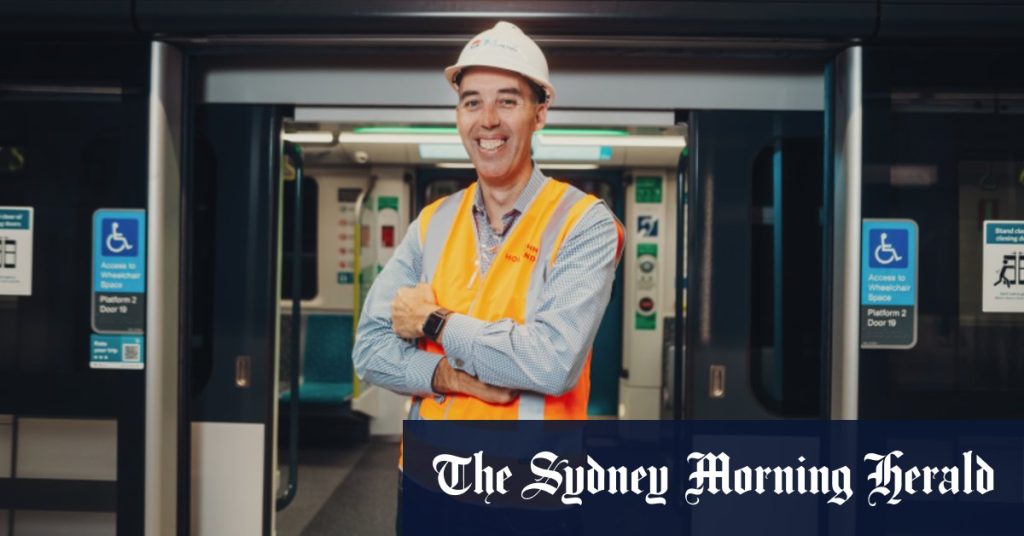Andrew Knispel, a long-serving engineer on Sydney’s metro projects, described the opening of a second harbour rail crossing as a historic moment due to the complexity of the construction involved. The metro extension from Chatswood to Sydenham via the city centre recently received clearance from the national rail safety regulator after missing an earlier opening date of August 4. Transport for NSW secretary Josh Murray highlighted the level of preparation being undertaken for the line’s opening, including tracking passenger movements to identify services with the highest demand. The opening of the line is expected to significantly change commuter behavior, with more people expected to switch between double-decker trains, buses, and metro services to reach their destinations.
The agency anticipates that passenger numbers on the extended metro line will quickly build up to around 37,000 during morning peak times and up to a quarter of a million trips on a typical weekday. Transport officials will closely monitor key stations such as Sydenham, Chatswood, Gadigal, and Martin Place, where passengers are likely to interchange between different services. Sydney transport expert Mathew Hounsell believes that commuters on double-decker trains along the Illawarra line are most likely to switch to metro services at Sydenham for a faster journey into the central city. However, the big question remains whether people from Sydney’s north-west will choose to catch metro trains to the north shore and then to the CBD, instead of driving.
The new metro line features six underground stations, including stops at North Sydney, Barangaroo, and Martin Place, as well as new platforms at Central and Sydenham. The opening of the line is expected to bring about significant changes in the way commuters travel around Sydney, with many people expected to benefit from time savings by switching between different modes of transportation. Commuter behavior is likely to shift as people choose to take the metro for its efficiency and convenience, particularly during peak travel times. The increased connectivity provided by the extended metro line is expected to have a positive impact on the overall transportation network in Sydney.
The completion of the metro extension has been a major engineering achievement, showcasing the intricate planning and construction involved in such a significant infrastructure project. The level of complexity associated with the second stage of the metro line has been described as unprecedented, highlighting the innovative engineering solutions and technological advancements that have been utilized. The opening of the new metro line marks a significant milestone for Sydney’s transportation system, with the potential to transform the way people travel around the city. Authorities are taking proactive measures to ensure a smooth transition for commuters and to optimize the efficiency of the transportation network as a whole.
The establishment of the new metro line is expected to have far-reaching implications for commuter behavior in Sydney, with more people likely to embrace the convenience and efficiency of the metro services. The increased connectivity provided by the extended metro line will offer commuters more options for reaching their destinations quickly and comfortably. Transport officials are closely monitoring passenger movements and service demand to ensure that the new metro line can effectively handle the anticipated increase in ridership. By tracking commuter behavior and adjusting services accordingly, authorities are working to create a seamless and efficient transportation network that meets the needs of the growing population in Sydney. The opening of the new metro line is a testament to the city’s commitment to enhancing its public transportation infrastructure and providing sustainable, reliable transportation options for its residents.













